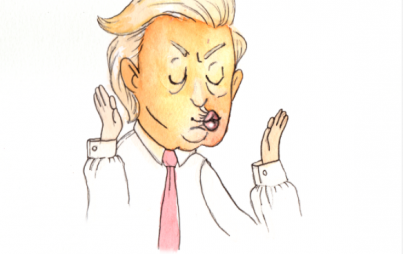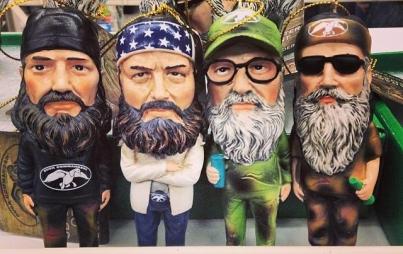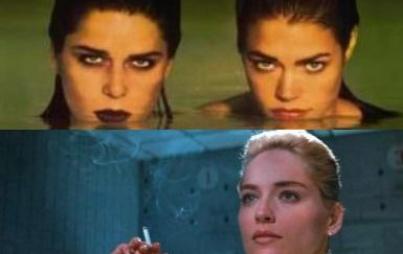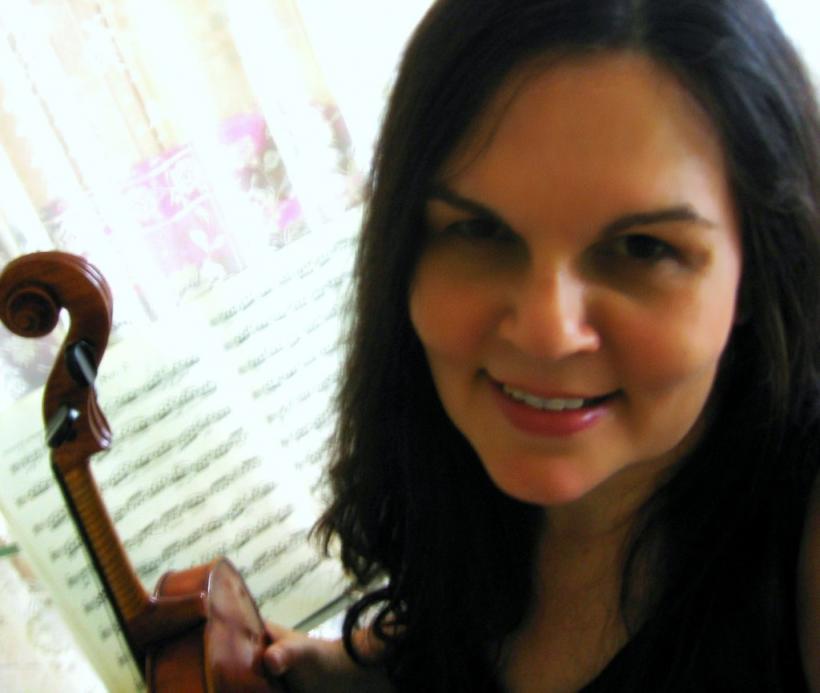
If crossword puzzling were architecture, Elizabeth Gorski would be I.M. Pei. Her consistently inventive puzzles are visual wonders that combine craftsmanship with style, nuance with big-picture vision. She's prolific, too: her work regularly appears in The New York Times, The Wall Street Journal, the Los Angeles Times and the Simon & Schuster Mega Series, and she publishes a weekly puzzle for the website Crossword Nation, where she serves as managing editor. Last year, she was named Constructor of the Year. Her puzzles have appeared in the documentary Wordplay and (yes) the Sandra Bullock film All About Steve.
Even more impressive? Gorski has accomplished this while quietly stepping over a crossword puzzling gender line. It's been estimated that about 20% to 30% of puzzles are bylined by females, down from about half in the heyday of the 60s and 70s. Last year, 31 men debuted a puzzle for The New York Times; just six women did the same.
We talked to Gorski about this gender imbalance, as well as her pioneering work and love of puns. We even got her to share and comment on some of her best-loved work.
Move over, Pei.
Why did you get involved in crossword puzzling?
I’ve always loved thinking of dreadful puns (oxymoron?)—like crossing seafood with Mario Puzo characters (Marlon Brando as The Cod Father, or James Conch as Sonny). Rather than torture my friends and family with the puns, I set out to learn how to make crosswords, which welcomed said wordplay. My steep learning curve began in the early 1990s. My first New York Times puzzle was published in 1995 and since then I’ve made over 200 puzzles for the newspaper.
What do you enjoy most about puzzling and the puzzle community?
Solver feedback. Receiving letters and emails from solvers is why I make puzzles. People are enormously generous and they forgive bad puns like non compost mentis (not making a heap of sense!) or Kashablanca (“mushy” Bogart film). (By the way, I've added "RAVISHLY" to my word list.)
I want my puzzles to entertain solvers through humor and literacy. No dumbing down—ever. As a lifelong Jeopardy! fan, I admire entertainment that calls on a broad knowledge base—from Lord Byron, to Jack Lord, to Lorde. The popularity of Jeopardy! proves that there’s a market for puzzles that aren’t dumbed down.
I know this is probably a tough question to answer, but . . . what puzzle are you most proud of?
I’m very fond of the Christmas Tree connect-the-dot crossword (New York Times, December 2002). I didn’t realize it back then, but it was the beginning of an era. That crossword was the first of its kind. I’d invented a new puzzle form—the connect-the-dot crossword! Solvers asked for more. Since then I’ve made connect-the-dot puzzles that celebrate the Louvre Pyramid, a gingerbread man, Frosty the Snowman, an angel and Secretariat. It’s gratifying to see other constructors emulate the connect-the-dot crossword form.
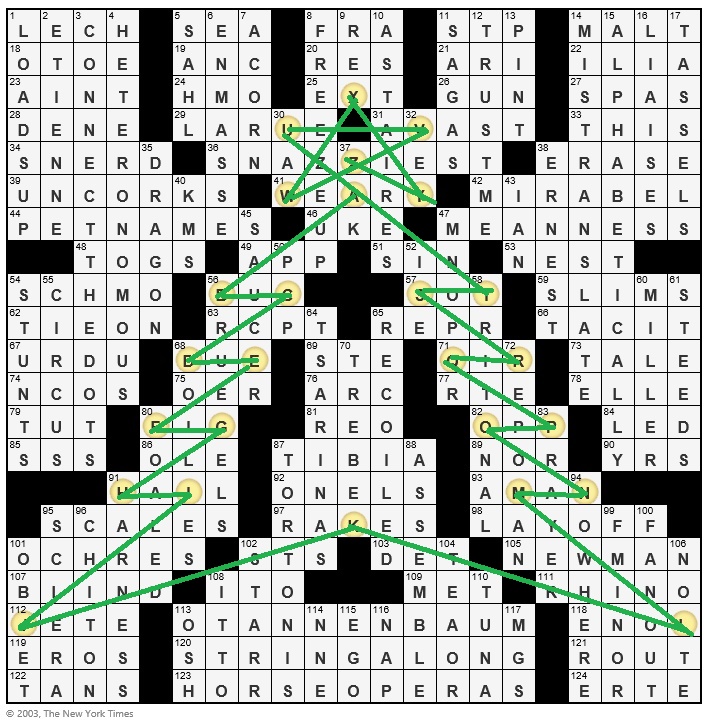
My other favorite is the Guggenheim Museum puzzle (New York Times, October 2009)—a spiral-shaped, asymmetric crossword that celebrated the 50th anniversary of the museum. On that Sunday, museum visitors were seen walking the spiral with the crossword in hand! It was thrilling to echo the unique spiral shape that Frank Lloyd Wright envisioned for his greatest, and final, design.
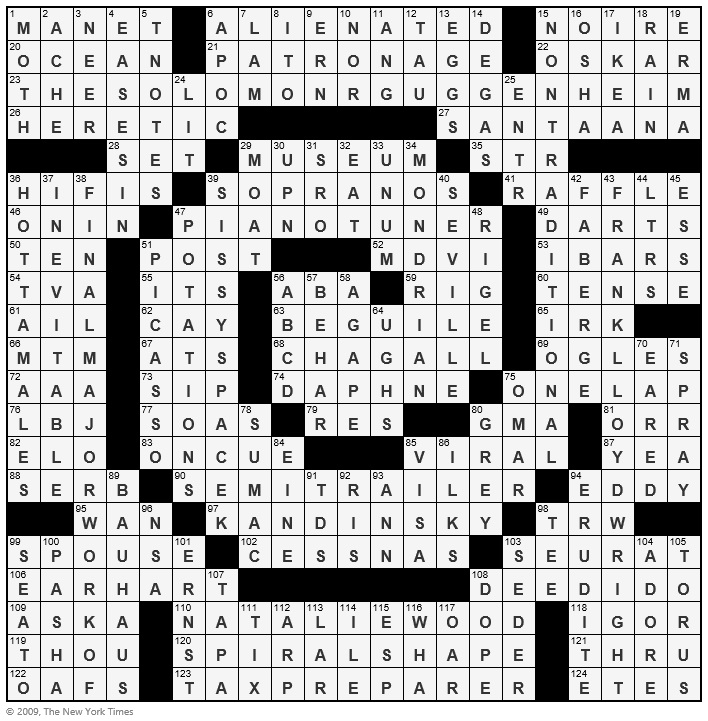
You are one of a small handful of female crossword puzzle constructors. Have there been efforts to change this gender dynamic? Is it discussed in the puzzling community?
Major outlets have always had the power to commission puzzles from an existing lineup of top women constructors. The landscape is changing, though. Young editors (under 35) are now commissioning puzzles from top women to offer a more balanced experience for solvers. It’s common sense and good business to be more diverse. Publishing crosswords by women and men—in even numbers—is good business. And the irony is, over the years, 80% of the solvers who write to me are male. Male solvers are very open and tolerant to change. Men love solving high-quality puzzles made by women. Vive la difference!
To change the gender dynamic, women should be proactive and create their own markets (à la Oprah and Arianna Huffington). Three years ago I launched my own weekly puzzle brand—Crossword Nation. My goal is to serve men and women with fresh, up-to-date crosswords. Crossword Nation puzzles are created, edited and fully tested within days of publication. I feel that paying subscribers deserve fresh, professionally-made puzzles with new themes. I love creating new, never-before-seen themes for solvers.
As for increasing the number of women in the field: I’m going to go all Seth Godin on you and encourage women to serve their own “tribes” as independent providers of puzzles—like Matt Gaffney, Brendan Emmett Quigley and Ben Tausig. This is where we can take a page from the men’s playbook. Women can improve the quality of crosswords by establishing higher standards for their own independent puzzles. And then, let’s offer those puzzles to our Tribes. Today’s robust technology enables us to create, offer and maintain control over our own products. Let’s channel Sandra Bullock, who created her own production company. I see tremendous opportunity in the independent space. For women constructors, that’s a powerful percentage play.
Are more women getting involved in puzzle constructing?
Women have always been involved in puzzle constructing. There’s no shortage. And if you look at the published puzzles over the last 20 years, you’ll find many talented women. There are some Mad Men-era myths about the dearth of puzzles by women in newspapers—that women’s computer skills aren’t as developed as men’s [myth!]. Or that women aren’t able to make “themeless” puzzles [myth!]. Those myths need to be pulverized into a fine ECRU dust and scattered over Mount ETNA. Amy Reynaldo created the oldest daily crossword blog which is still going strong. I’ve built four websites. Since the ‘90s I’ve encouraged editors to embrace crossword software to streamline the puzzle production process.
The solution is very simple: Women make great puzzles. We exist. Hire us.
Who are some female constructors you admire, and why?
Maura Jacobson and Margaret Farrar. These women held executive positions and shaped the evolution of crossword puzzles. Margaret Farrar—the first, and longest-serving, crossword editor of The New York Times—set puzzle standards that are in play today. (I’m waiting for someone to write a book-length biography of Margaret Farrar. If you’re a biographer, Margaret Farrar is a fascinating subject.)
I am in awe of Maura Jacobson’s consistently literate and entertaining puzzles in New York magazine. She presided over the puzzle for 30 years! As a beginning solver, I couldn’t wait to tackle Maura’s puzzles each week—she delighted us through humor, accessibility and literacy. She made us feel great.
Your set puzzles were commissioned for the Sandra Bullock film All About Steve. Can you talk more about this?
Sandra Bullock, who has her own production company, is an example of a versatile actress who created her own business within a very competitive industry. She’s a brilliant executive and negotiator—as evidenced by her compensation arrangements for Gravity. Her production company gave me carte blanche to create puzzles that Sandra’s character would have constructed in All About Steve. I made about 12 puzzles for the movie set—all shapes and sizes, with visual themes and gimmicks. Professionalism starts at the top and Sandra Bullock presides over a well-run, classy company. It was one of my favorite and rewarding custom puzzle gigs.
Have your puzzles appeared in any other unexpected mediums?
I love when the puzzles inspire art, like Hayley Gold’s amazing webcomic about the “On Wheels” puzzle . . . she totally gets my crazy “visual” constructing style.
What's your life like outside of puzzling? What other hobbies and interests do you have?
I started violin studies at age eight. Music is my lifelong passion (you’ll find many music clues in my puzzles) and I continue to perform on a freelance basis. I applied the discipline of daily practice (the art of working alone and solving problems) to puzzle constructing.
BONUS: Gorski explains her puzzle "High Definition," created in commemoration of the Empire State Building's anniversary. In the hit documentary Wordplay, it was featured as one of "Five Unforgettable Puzzles."
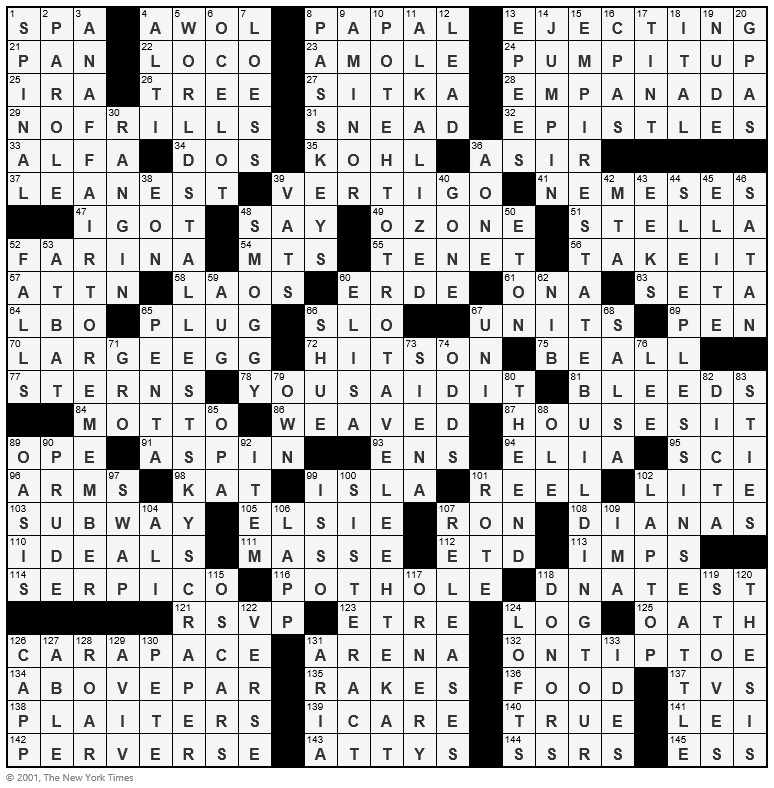
The puzzle has a "trick" entry that runs vertically up the center. One has to read it from the bottom up, to simulate an elevator ride to the top . . . "TAKE THE ELEVATOR TO THE TOP." This puzzle was inspired by Sleepless in Seattle, which features Meg Ryan and Rosie O'Donnell getting all teary and emotional about An Affair to Remember. Both films appear in the puzzle because I noticed that each title is 18 letters in length—perfect for a symmetrical placement on the grid. Both films culminate in a scene at the top of the Empire State Building.

